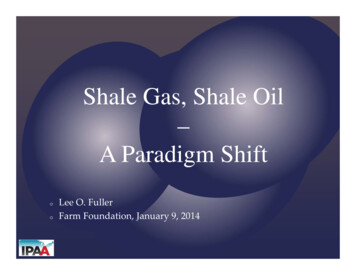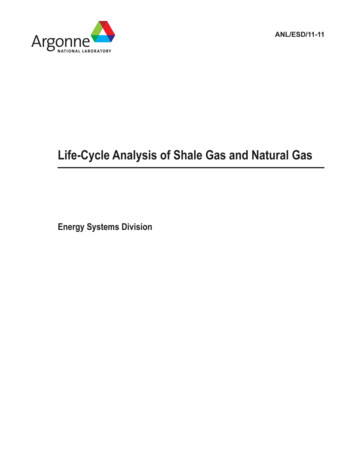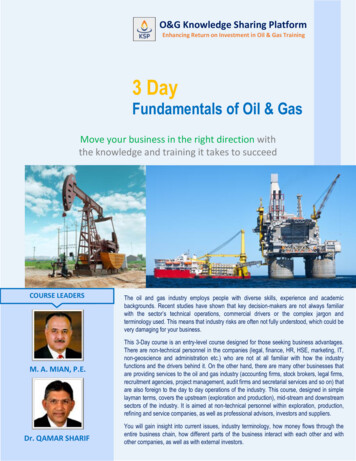
Transcription
Shale Gas, Shale Oil–A Paradigm ShiftooLee O. FullerFarm Foundation, January 9, 2014
Beginning The Shale Revolution American Oil and Natural Gas were declining Oil development had slowed; focus was on Alaska andoffshoreSignificant natural gas drilling activity in late 1990s andearly 2000s had failed to generate much expansionNatural Gas Wells DrilledNatural Gas Production2500020000200001900015000180001000017000
Beginning The Shale Revolution Imports would grow Oil imports had exceeded 50 percent continued totrend upward Natural gas hinged on LNG imports Barnett Shale starts the change Horizontal drilling and hydraulic fracturing areeffectively combined to open shale to economicdevelopment
Convincing The Doubters Initial natural gas production increases fail toconvince analysts of sustainabilityShale oil production begins but impact unclearContinuing successes and additional fields becomingproductive demonstrate that shale resources aresustainableNatural Gas Production23000210001900017000150002001 20022003 20042005 200620072008200920102011
Recognizing The Benefits American natural gas production reaches new highs;reserve estimates show capacity to meet futuredemand for 100 years American oil production moves toward levels notseen since 1992 Import dependency falls Production expected to increase until 2019
A Positive Future American natural gas production benefits Expanded use for electricity generation Driving expansion of industrial productionincluding chemicals and fertilizer Opens opportunity for LNG exports to benefittrade balancesAmerican oil production benefits Reduced imports shift international politics Shale oil light, sweet crudes offer both domesticand international opportunities
Challenges Environmentalist fossil fuel opposition
Challenges Excessive regulation – Environmentalists targeting federal,state and local regulations, including bans Drilling and Fracturing Water management Federal regulations focusing on BLM, use of diesel fuelStates drawing attention – California, Illinois, NYLocal ban initiatives – ColoradoFederal focus on discharges under the Clean Water Act,waterborne transportationStates looking at UIC management (including inducedseismicity) and water useAir emissions Methane emissions drawing federal and state attention Federal NSPS focused on new natural gas wells;environmentalists want oil and existing facilities covered States developing regulatory frameworks for both new andexisting sources
Challenges Technical challenges Managing water Fracturing water use continues to draw attentionalthough it is small compared to other demandsProduced water management drawing new attention Discharge prohibited under the Clean Water Act Primarily managed under UIC but increasing volumesdrawing attention Substantial growth in reuse of water but salt contentand costs can limit applicabilityExpanding recovery of resources Even with fracturing significant amounts of oil andnatural gas will remain in the ground and the industrywill be challenged to recover these volumes in thefuture
ChallengesMarkets Developing domestic marketsNatural Gas Consumption By Sector10000Bcf/year 80006000400020000Vehicle FuelCommercialResidentialIndustrialElectric Power
Challenges Markets Developing international markets161412Projections of Exports10Coal8Natural Gas6Liquid Fuels andOther Petroleum4202020 (1998)2020 (2014)
American Oil and Natural Gas were declining Oil development had slowed; focus was on Alaska and offshore Significant natural gas drilling activity in late 1990s and early 2000s had failed to generate much expansion Beginning The Shale Revolution 10000 15000 20000 25000 Natural Gas Wells Drilled 17000 18000 19000 20000 Natural Gas Production










